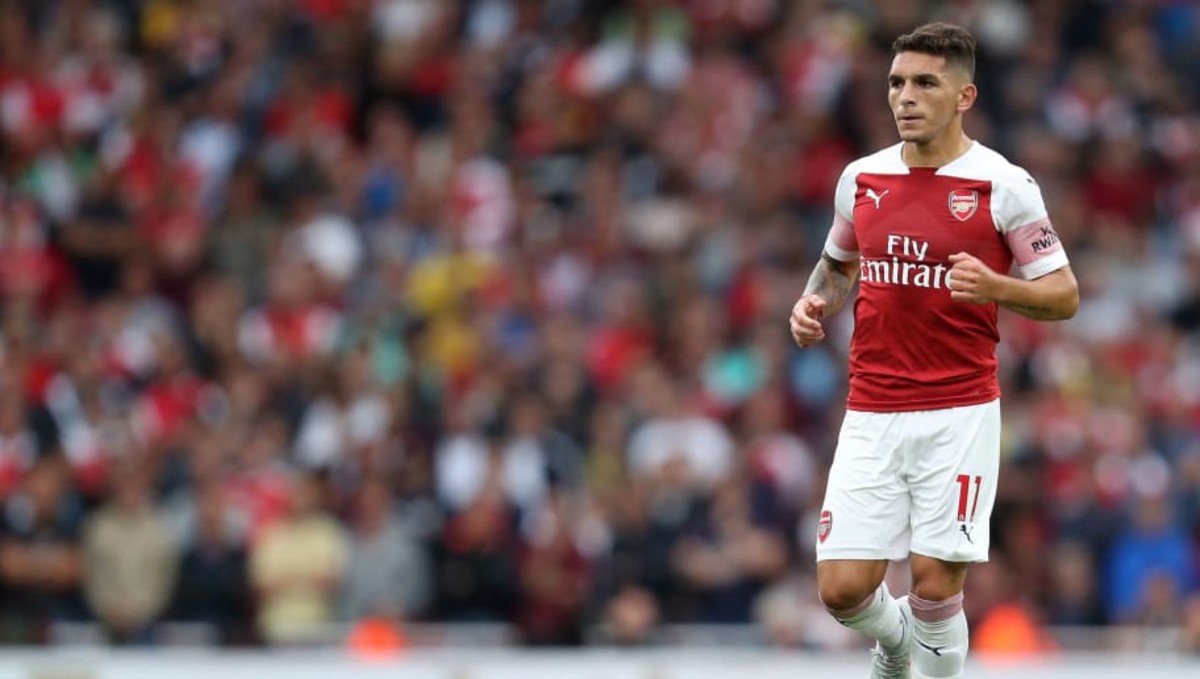Why Granit Xhaka & Lucas Torreira Can Form One of the Premier League's Best Midfield Partnerships

In recent decades, the great Arsenal teams have often been defined by a strong midfield base. Likewise, the less successful Gunners' sides have been criticised for lacking the aforementioned.
The partnership between Patrick Vieira and Gilberto Silva was the bedrock of the almighty ‘Invincibles’ side; while the floundering among the likes of Denilson, Francis Coquelin and Alex Song were behind the barren run of trophyless years at the Emirates.
Arsenal now have a set of central midfield options which offers potential for more solid midfield foundation to guide Unai Emery’s side back to past glories.
Granit Xhaka, Lucas Torreira, Matteo Guendouzi, Ainsley-Maitland-Niles and Mohamed Elneny now compete for the two places at the base of midfield in Emery’s 4-2-3-1 formation. The question is no longer over a lack of quality, but which combination of players is best suited to form an effective partnership.
So far this season, Emery has opted for Xhaka and Guendouzi as his preferred pairing, with Torreira the surprise exclusion following his £26m summer arrival at the Emirates.
Although Guendouzi has been the surprise package following a more low-key arrival in north London during the summer, winning the club’s player of the month award for August, Arsenal’s midfield has often lacked balance, and it has seen them concede too many goals.
Xhaka has been - typically - assigned much of the blame for his performances in amongst a collective failure from Arsenal to keep a clean sheet in their first four Premier League games of the season.
The Swiss midfielder’s lack of pace, positional discipline and misplaced passes under pressure have come under fire already from a number of Gunners fans. Whilst Xhaka’s individual shortcomings are an issue to be analysed, it should also be considered that perhaps Arsenal are not playing to the 25-year-old’s strengths.
Unai Emery has consistently stressed Xhaka’s importance to his team since the Spaniard’s appointment as Arsenal’s head coach during the summer, and even made the Swiss international one of five ‘captains’ in his squad’s leadership group.
Indeed, much of Arsenal’s play goes through Xhaka as the link between defence and midfield, and often thrives when given the opportunity to play through balls to the strikers.
The issue is that, with Matteo Guendouzi as his partner - as was the long-term case with Aaron Ramsey playing alongside Xhaka in the deeper midfield positions - Xhaka is not an out-and-out defensive midfielder, and neither are the men being deployed alongside him.
Xhaka is, in essence, what is typically termed as a deep-lying playmaker. The role which was made famous by the likes of Andrea Pirlo, Xabi Alonso and, during his re-invention at Arsenal, Santi Cazorla.
In the cases of each of the famed trio of playmakers, they were allowed to thrive by those playing alongside them. During the finest years of his career with AC Milan, Pirlo was afforded the licence to roam and dictate by the industrious, tough tackling Gennaro Gattuso playing alongside him.
This is the kind of insurance policy which Xhaka is lacking in order to fully thrive in an Arsenal shirt. Matteo Guendouzi is primed to be a deep midfielder, but not a tough-tackling enforcer in the Gilberto Silva mould. Without a Gilberto next to him, Xhaka lacks the freedom to play forward which the Brazilian afforded Patrick Vieira.
Xhaka is not a tackler, he is a ball player. Yet both Arsene Wenger and, so far, Unai Emery have counted on the Swiss midfielder as their primary defensive base in midfield. What seems most strange in this sense is that Lucas Torreira remains without a start for his new side.
In all four Premier League games so far this season, the Uruguayan has been brought on to feature in the majority of the second half of each match, generally alongside Xhaka. In each case, upon Torreira’s arrival in the match, Xhaka’s game has been raised to another level, and Arsenal have conceded far less.
Torreira’s ability to cover ample amounts of space with his tireless work rate, an expert ability to read danger and execute immaculately timed tackles and a natural capacity to shield the defence make him Xhaka’s ideal partner.
Xhaka has been the subject of derision and impatience from his critics at Arsenal. The fact that he is burdened with an unnatural role in the side is often overlooked.
With Torreira now on board as the tough-tackling, workman-like destroyer to finally complement Arsenal’s creative forces to a fuller extent, Xhaka may now be the greatest beneficiary of all in what could become the Gunners’ new formidable midfield pairing.





